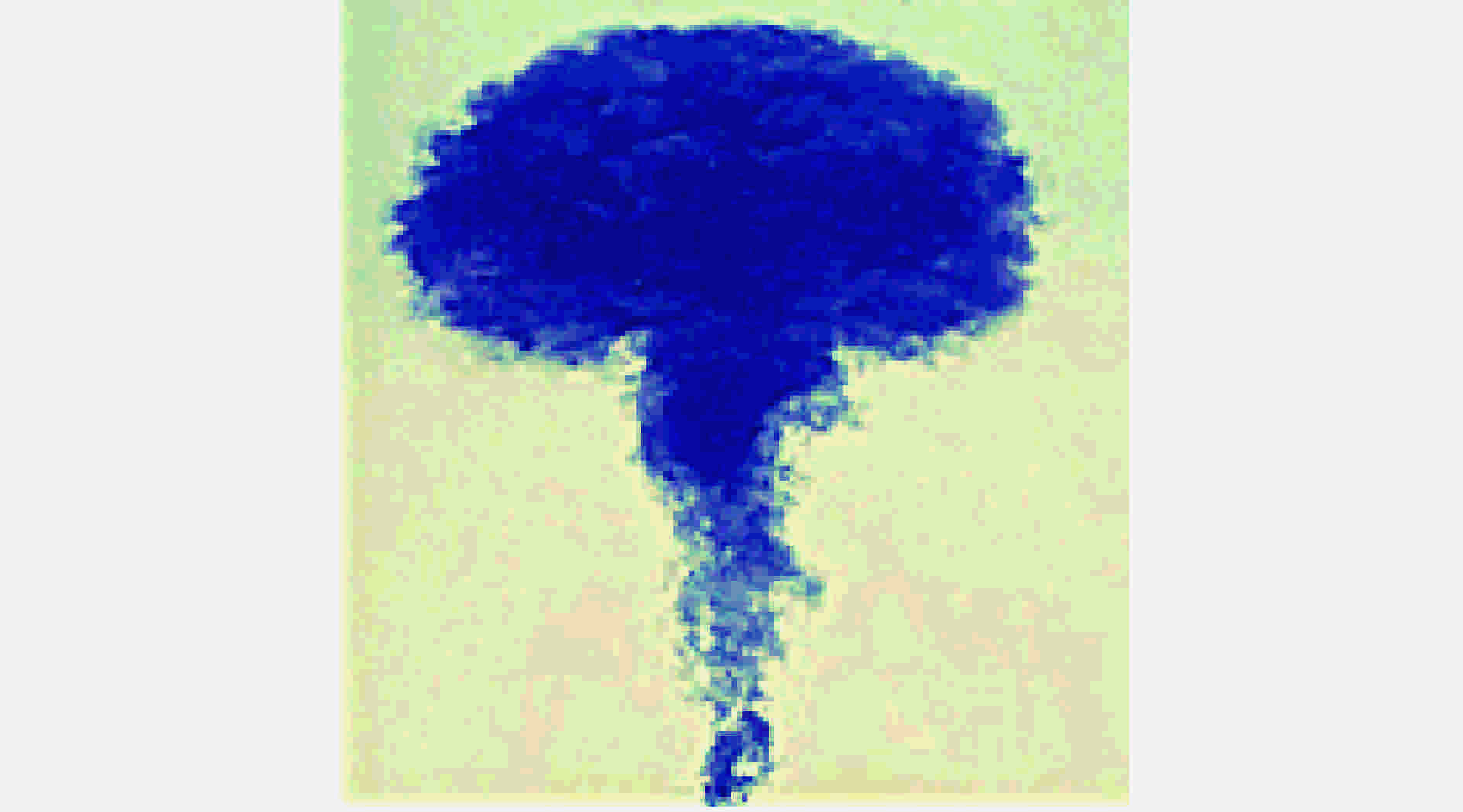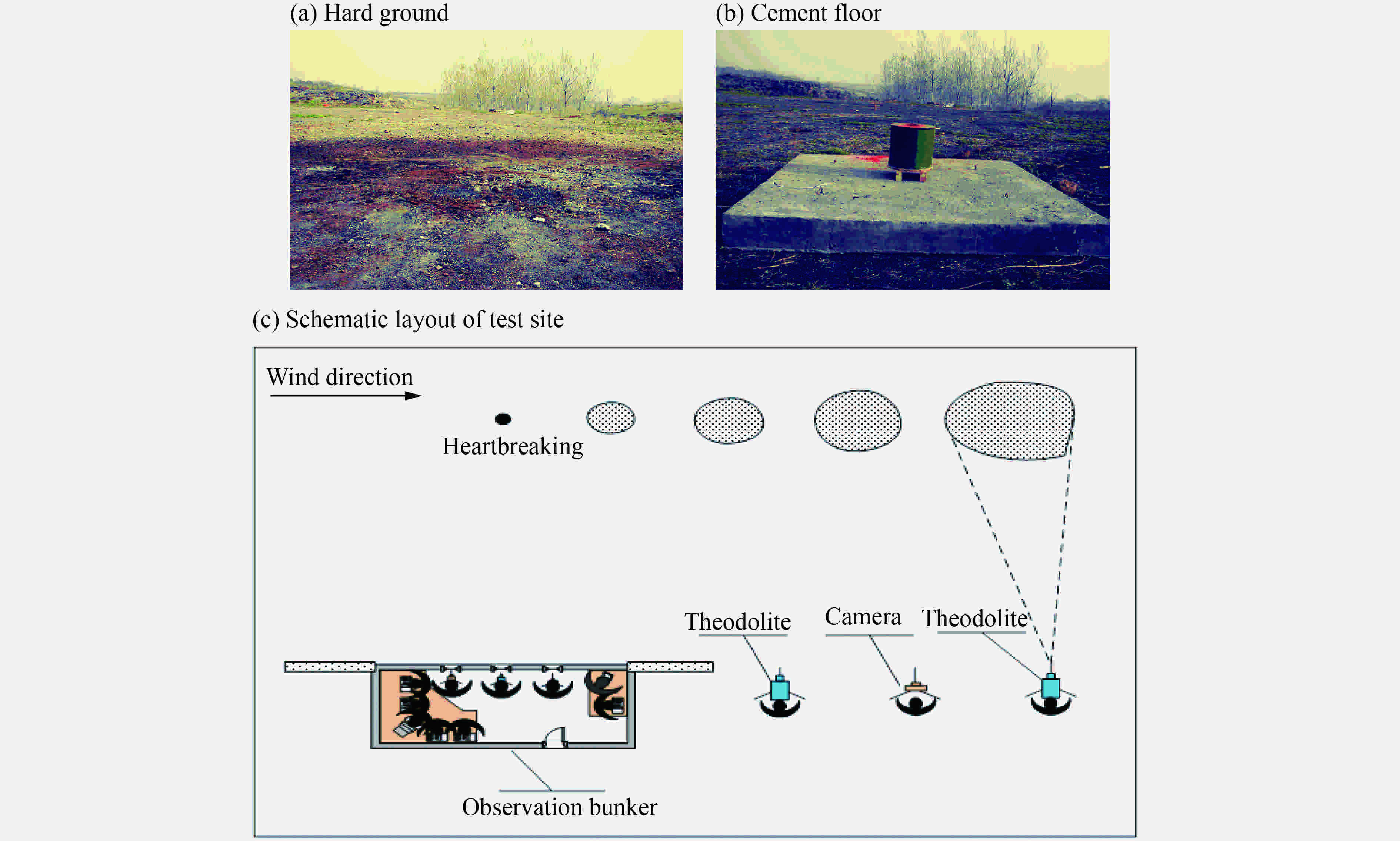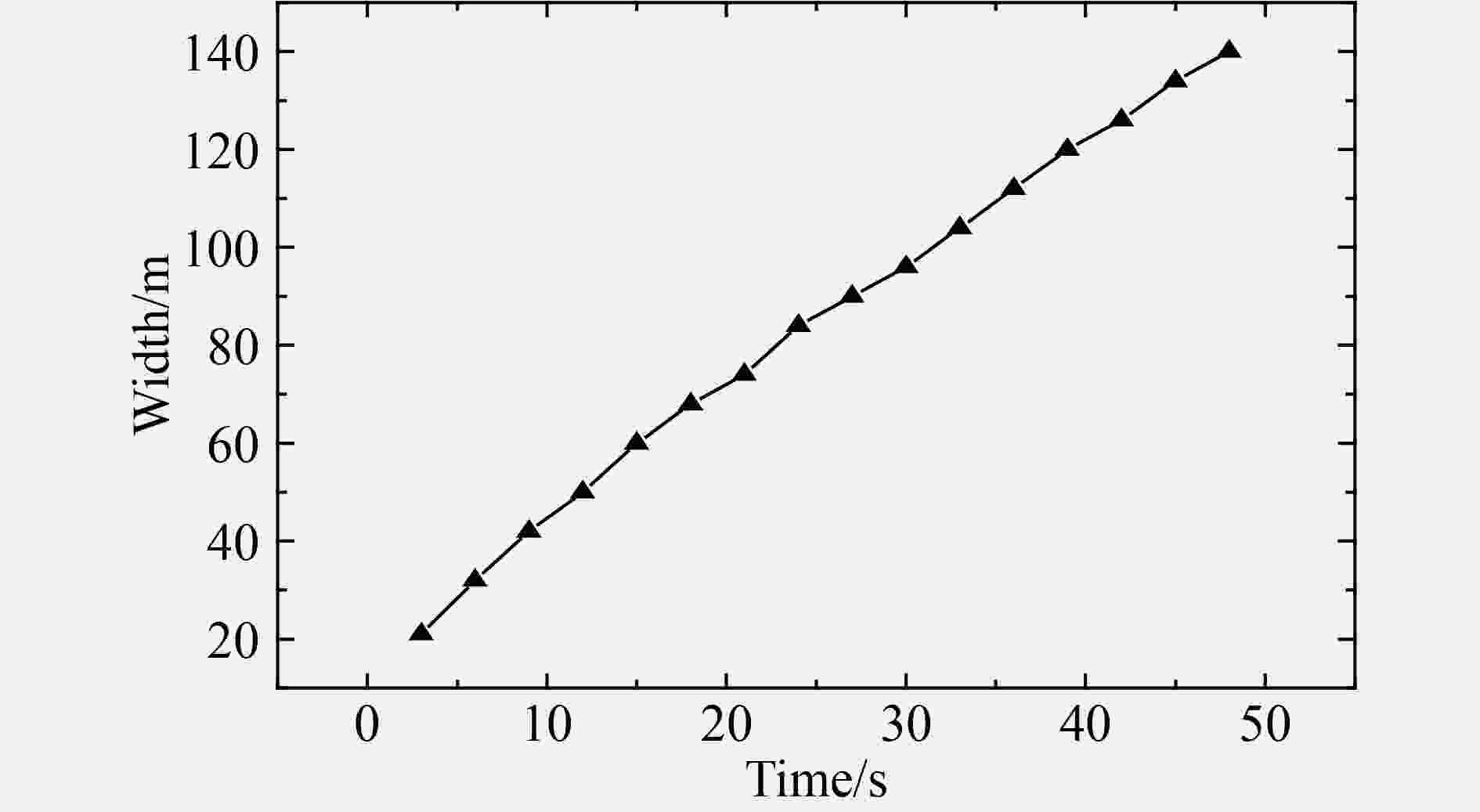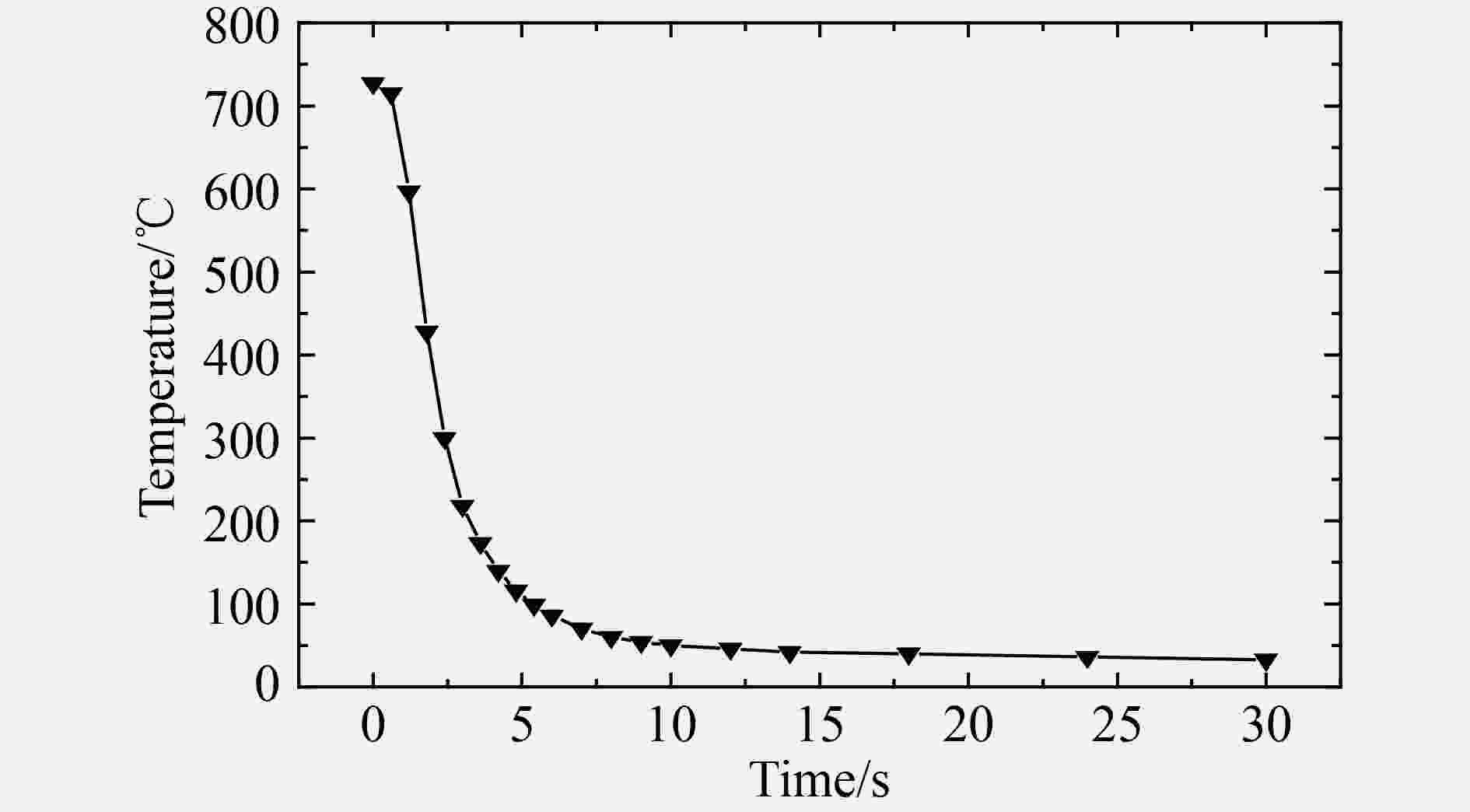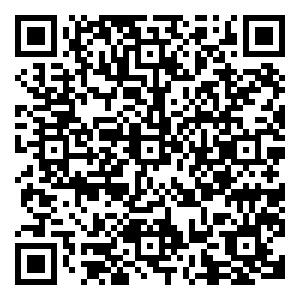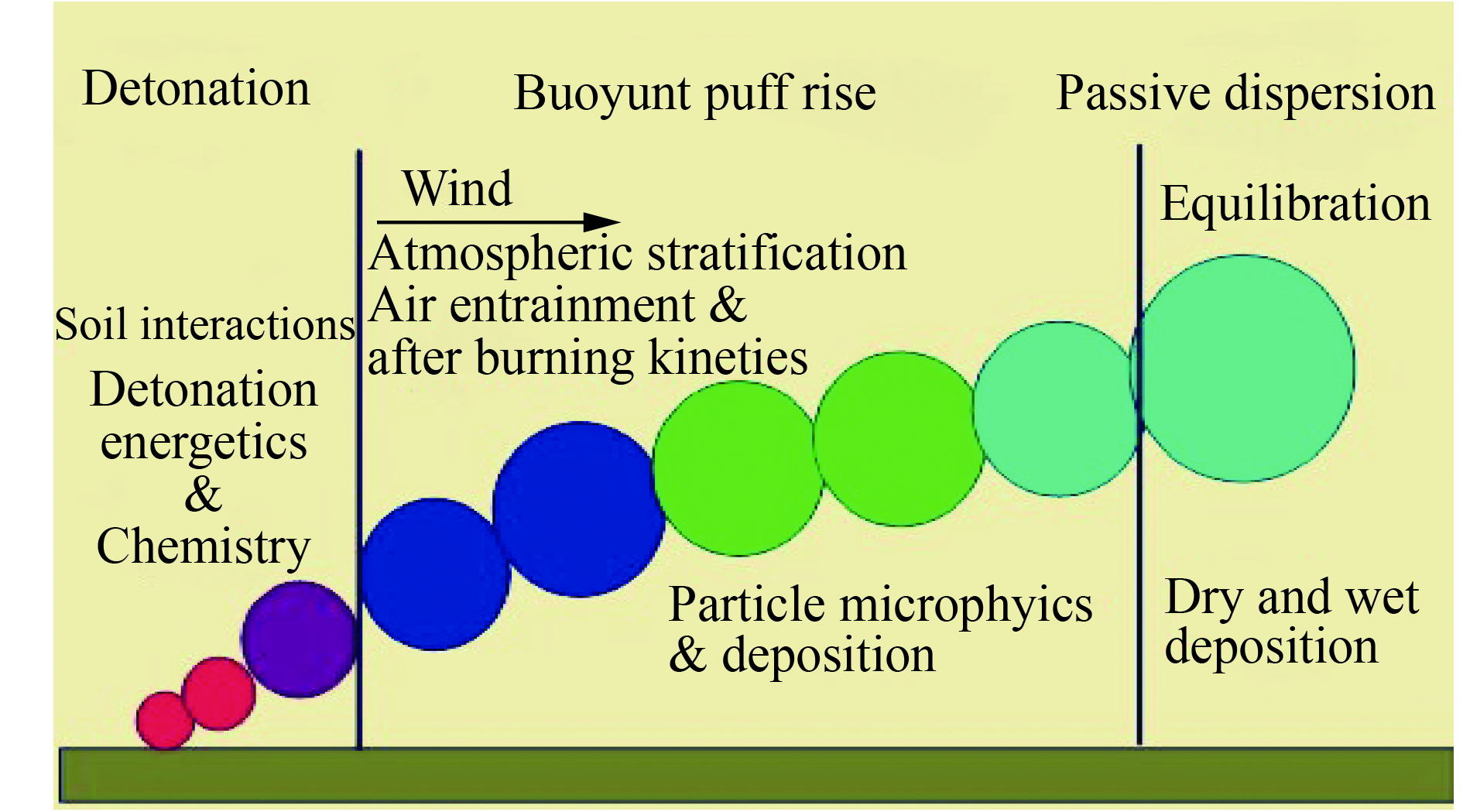Temporal and spatial distribution models of explosive cloud diffusionand their characteristics
-
摘要: 针对爆炸烟云扩散的时空分布问题,在严格限定实验条件的前提下,设计并开展了不同当量、不同地面条件、不同炸药装置壳体厚度的3组TNT爆炸烟云扩散外场实验,获得了不同实验条件下烟云扩散时空分布数据,运用计算流体力学(computational fluid dynamics, CFD)对爆炸烟云的扩散过程进行了数值模拟。通过分析实验和数值模拟获取的烟云时空分布数据,得到了烟云扩散形态演变过程及浮力流场信息,确定了厚水泥地面条件和硬质地面条件下不同的爆炸烟云扩散高度分布模型。研究结果表明:采用实验与数值模拟相结合的方法来表征烟云时空分布模型是科学可行的,爆炸烟云高度随时间呈1/2次幂函数增长,烟云宽度短时间内几乎呈线性扩展,烟云温度随时间呈反比例函数衰减,爆轰地面条件和炸药装置壳体厚度对烟云扩散高度均有不同程度的影响。Abstract: In order to solve the problem of temporal and spatial distribution of explosive clouds, three groups of TNT explosion cloud field experiments were designed and carried out under the premise of strictly restricting the explosion conditions. The experiments obtained the spatiotemporal distribution of cloud under different experimental conditions. The diffusion process of the explosive cloud was simulated by computational fluid dynamics (CFD). By analyzing the space-time distribution data from the cloud experiments and simulations, the evolution process of the cloud and the information of the buoyancy flow field were obtained, and the diffusion height distribution models of different clouds were determined under the conditions of thick cement floor and hard ground. The results show that the combination of experiment and simulation can be used to characterize the spatial and temporal distribution model of the cloud. The cloud height of the explosion increases by 1/2 power function with time. The cloud width increases linearly with time in a short time. The temperature of the cloud attenuates in inverse proportion to time. The ground conditions for the detonation, and the shell thickness of the explosive device can affect the diffusion height of the explosive cloud in different degrees.
-
表 1 实验分组
Table 1. Experiment groups
组号 M/kg 地面条件 水平风速 炸药装置 大气稳定性 T0/℃ φ/% 1 1 厚水泥地面 无风 裸装药 基本稳定 25±3 40~60 16 厚水泥地面 无风 裸装药 基本稳定 25±3 40~60 62 厚水泥地面 无风 裸装药 基本稳定 25±3 40~60 2 16 硬质地面 无风 裸装药 基本稳定 25±3 40~60 62 硬质地面 无风 裸装药 基本稳定 25±3 40~60 3 62 厚水泥地面 无风 厚铁壳 基本稳定 25±3 40~60 表 2 烟云高度拟合参数
Table 2. Parameters of cloud height fit
M/kg a b R 1 6.15 0.518 0.983 16 14.92 0.502 0.995 62 25.56 0.486 0.987 -
[1] 黄寅生. 炸药理论[M]. 北京: 兵器工业出版社, 2009: 6−30. [2] 郑毅. 瞬时热源(爆炸烟云)浮力涡环研究[D]. 北京: 清华大学, 2008: 12−40. [3] 李晓丽, 郑毅, 刘伟, 等. 爆炸烟云运动的试验与数值模拟研究初探 [J]. 核电子学与探测技术, 2011, 31(2): 131–135. doi: 10.3969/j.issn.0258-0934.2011.02.002LI Xiaoli, ZHENG Yi, LIU Wei, et al. A preliminary study on the experiment and numerical simulation of explosive smoke [J]. Nuclear Electronics and Detection Technology, 2011, 31(2): 131–135. doi: 10.3969/j.issn.0258-0934.2011.02.002 [4] 王善强, 毛用泽. " 脏弹”爆炸初始烟云特征分析 [J]. 防化研究, 2007(4): 21–24. [5] MAKHVILADZE G M, ROBERTS J P, YAKUSH S E. Modeling of atmospheric pollution by explosions [J]. Environmental Software, 1995, 10(2): 117–127. DOI: 10.1016/0266-9838(94)00005-r. [6] KANSA E J. A time dependant buoyant puff model for explosion sources: UCRL-ID-128733 [R]. USA: Lawrence Livermore National Laboratory, 1997. [7] KANARSKA Y, LOMOV I, GLENN L, et al. Numerical simulation of cloud rise phenomena associated with nuclear bursts [J]. Annals of Nuclear Energy, 2009, 36(10): 1475–1483. doi: 10.1016/j.anucene.2009.08.009 [8] MISHRA K B, WEHRSTEDT K D, KREBS H. Boiling liquid expanding vapour explosion (BLEVE) of peroxy-fuels: experiments and computational fluid dynamics (CFD) simulation [J]. Energy Procedia, 2015, 66(2): 149–152. [9] THIELEN H, SCHRODL E. Blast experiments for the derivation of initial cloud dimensions after a " dirty bomb” event: Koln- 50667 [R]. Germany, 2004. [10] SHARON A, HALEVY I, SATTINGER D, et al. Cloud rise model for radiological dispersal devices events [J]. Atmospheric Environment, 2012, 54: 603–610. doi: 10.1016/j.atmosenv.2012.02.050 [11] LEBLEL L, BOURGOUIN P, CHOUHAN S, et al. The sensitivity of atmospheric dispersion calculations in near-field applications: modeling of the full-scale RDD experiments with operational models in Canada: part I [J]. Health Physics, 2016, 110(5): 499–517. [12] CHURCH H W. Cloud rise from high explosive detonations: TID-4500 [R]. USA: Sandia National Laboratories (SNL), 1969. [13] BROWN R C, KOLB C E, Conant J A, et al. Source characterization model (SCM): a predictive capability for the source terms of residual energetic material from burning and/or detonation activities: ART-RR-1384 [R]. 2004. [14] 袁涛, 罗永锋, 尚爱国, 等. 爆炸烟云中粒子运动的数值模拟 [J]. 爆炸与冲击, 2013, 33(5): 556–560.YUAN Tao, LUO Yongfeng, SHANG Aiguo, et al. Numerical study on particle motion in explosive buoyant [J]. Explosion and Shock Waves, 2013, 33(5): 556–560. [15] 陈福振, 强洪夫, 苗刚, 等. 燃料抛撒成雾及其燃烧爆炸的光滑离散颗粒流体动力学方法数值模拟研究 [J]. 物理学报, 2015, 64(11): 110202–110202.CHEN Fuzhen, QIANG Hongfu, MIAO Gang, et al. Numerical simulation of smooth discrete particle hydrodynamic method for fuel dispersion and its burning and explosion [J]. Chinese Journal of Physics, 2015, 64(11): 110202–110202. [16] 段中山, 罗永锋, 袁伟, 等. 爆炸烟团扩散的实验与仿真研究 [J]. 高压物理学报, 2013, 27(2): 305–311.DUAN Zhongshan, LUO Yongfeng, YUAN Wei, et al. Experiment and simulation of explosive cloud diffusion [J]. Journal of High Pressure Physics, 2013, 27(2): 305–311. [17] WU C, LUKASZEWICZ M, SCHEBELLA K, et al. Experimental and numerical investigation of confined explosion in a blast chamber [J]. Journal of Loss Prevention in the Process Industries, 2013, 26(4): 737–750. DOI: 10.1016/j.jlp.2013.02.001. [18] ABDUL-KARIM N, BLACKMAN C S, GILL P P, et al. The spatial distribution patterns of condensed phase post-blast explosive residues formed during detonation [J]. Journal of Hazardous Materials, 2016, 316(4): 204–213. DOI: 10.1016/j.jhazmat.2016.04.081. [19] KWAK H Y, KANG K M, KO I, et al. Fire-ball expansion and subsequent shock wave propagation from explosives detonation [J]. International Journal of Thermal Sciences, 2012, 59(9): 9–16. DOI: 10.1016/j.ijthermalsci.2012.04.022. [20] 王瑞金, 张凯, 王刚. Fluent技术基础与应用实例[M]. 北京: 清华大学出版社, 2007: 5−60. [21] FEDINA E, FUREBY C. Investigating ground effects on mixing and afterburning during a TNT explosion [J]. Shock Waves, 2013, 23(3): 251–261. DOI: 10.1007/s00193-012-0420-9. -






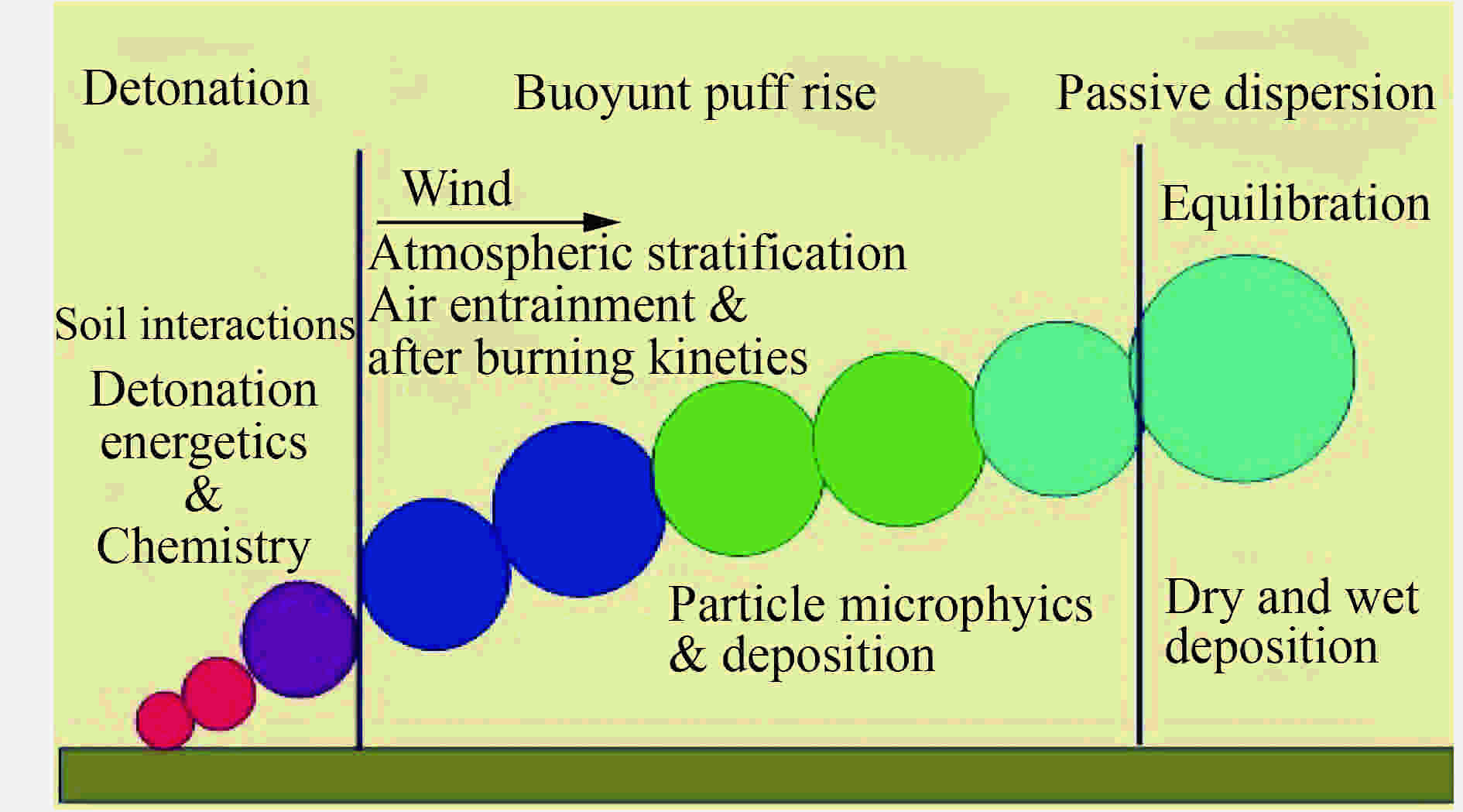
 下载:
下载:
